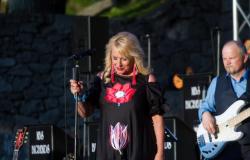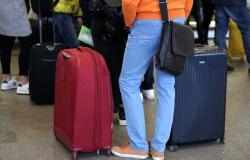on April 3 at At 3:20 p.m. in the lobby of the 2nd floor of the Valmiera State Gymnasium, the exhibition “With the sun in the flag!” created by the head of the Veterans’ Association of the 27th Infantry Battalion of the National Guard, Jānis Bahmanis and his associates will be opened.
The use of the red-white color combination, emphasizing their national significance, is associated with the period from the 70s of the 19th century. The use of red and white colors appears already in the Chronicle of Rhymes and later also appears in the flags. One of the most active popularizers of national colors was pedagogue and journalist Jānis Eduards Lapiņš (1885–1941), who worked in Valmiera. In 1916, when the country of Latvia was not yet born, Marianna Straumane (1896–1985), a teacher at the refugee shelter in Valmiera, sewed the national flag after her teacher, later spouse Jānis Eduards Lapiņš. It has a yellow sun in the upper left corner. The flag was viewed by many Latvian cultural workers who visited the apartment of Jānis Eduards Lapiņš. On March 12 and 13, 1917, this flag was ceremoniously raised over the local Valmiera Latvian Society building during the Vidzeme Land Assembly. It adopted seventeen resolutions, the most important of which is the resolution on the issue of Latvia’s autonomy and right to self-determination. Equally important was the decision to unite all parts of the Latvian land, including Latgali, into an administrative unit called Latvia.
According to the flag made by Jānis Eduards Lapiņš, the “road”, as emphasized by Jānis Bahmanis, is a topic worthy of research. “In the book of Tālas Pumpuriņas, we read that Jānis Eduards Lapiņš gives the flag in a small format to Jānis Bērziņas from Valmiëria, who goes to war and introduces the flag to the rifle battalions. The story is continued by the merciful sister Marta Gailīte, who takes care of the wounded archers. The year is 1917, the Battle of Christmas is taking place. In September, when the Germans attack intensively, the infirmary retreats to Kaugurmuiž, then to Tartu. After the signing of the peace agreement, Marta starts living in Priekuli, meets Hugo Celmiņas, who creates an agricultural school (now Vidzeme Technology and Design Technical College), but later becomes the Prime Minister. Marta and Hugo get married. The flag is still with her, and when the Northern Latvian Brigade of the Latvian Army liberated Vidzemi and the soldiers passed by the windows of their house, Marta greeted them with this flag.”
On the other hand, when the children’s shelter was evacuated from Valmiera to Kazan and Marianna also went there, soon joined by Jānis Eduards Lapiņš, he took with him the red and white flag with the sun made by Marianna – the first sewn red and white flag. After returning in the 1920s and 1930s, the flag was kept by the Lapiņi family. On the other hand, during the years of German occupation, it traveled again with its maker – Marianna and her daughter were evacuated to Germany. The flag ended its more than 80-year journey in Cēsis and is still on display in the Cēsis Museum of History and Art.
“Our ancestors worshiped the sun, this can also be seen in the traditions of the Ligo festival. The flag of the Song Festival carries the message “Lihgo”. Thousands of objects with the sun symbol have been found in excavations, it also appears in our writings. I am very interested in the connection with the past, it is the beginning of 1918 and our current national flag,” says Jānis Bahmanis.
The exhibition is divided into three main themes: antiquity – the sun of faith, the sun of freedom and the sun of victory.
Jānis Bahmanis made a significant contribution to the study of Latvian history, especially noting the topic of the importance of the sun symbol in Latvian flags and emblems. A great deal of work has also been invested in the creation, maintenance and preservation of the memorial site of the author of the national flag, Jānis Eduards Lapiņas.
It will be possible to view the exhibition in the lobby of the 2nd floor of the Valmiera State Gymnasium until May 15.
The exhibition is dedicated to the 20th anniversary since Latvia became a member of the world’s strongest military alliance – the North Atlantic Treaty Organization (NATO).
This information is a public announcement and does not reflect the opinion of the LV portal. The sender is responsible for its content. Terms of publication
Tags: April exhibition history Latvian flag display Valmiera






